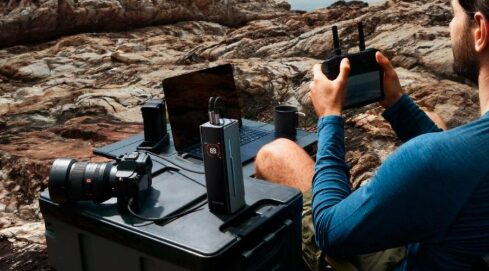Winter brings cozy moments but also frustrating tech issues—like when your fully charged power bank suddenly dies in the cold. Many users notice their portable chargers drain faster or stop working altogether in freezing temperatures. This isn’t a defect; it’s science. Lithium-ion batteries, which power most portable chargers, struggle in the cold just like we do.
Understanding why this happens and how to work around it can save you from powerless emergencies during winter hikes, commutes, or outdoor events. In this article, we’ll explain the science behind cold-weather battery drain and share practical tips to keep your devices charged all season.
How Cold Temperatures Affect Battery Chemistry
Batteries rely on chemical reactions to store and release energy, and cold temperatures slow these reactions significantly. Inside a lithium-ion battery, lithium ions move between electrodes to create electrical current. When temperatures drop, these ions move sluggishly, reducing the battery’s ability to deliver power efficiently. This doesn’t damage the battery permanently—it’s just temporarily less effective until warmed up. However, consistently exposing your power bank to extreme cold can shorten its overall lifespan.
Real-World Winter Performance Issues
Faster Discharge When Used in Cold (e.g., Skiing/Camping)
If you’ve ever taken your power bank skiing or winter camping, you’ve likely seen its charge plummet faster than usual. This happens because the cold forces the battery to expend extra energy to maintain operation. A power bank that normally charges your phone three times might only manage one or two in freezing conditions. The colder it gets, the worse the performance—below -10°C (14°F), many power banks become nearly unusable until warmed.
Charging Failures Below 0°C (32°F)
Most power banks refuse to charge devices when their internal temperature drops below freezing—this is actually a safety feature. Charging a frozen lithium battery can cause permanent damage or even dangerous lithium plating inside the cells. You might plug in your phone only to find nothing happens, even though the power bank shows remaining charge. This isn’t a malfunction; it’s the device protecting itself. The solution is simple: warm the power bank first. Putting it in an inner pocket for 10-15 minutes usually brings it back to operating temperature.
False “Empty Battery” Readings in Extreme Cold
Ever seen your power bank suddenly show 0% in the cold, then magically “recover” charge when warmed up? This common phenomenon occurs because cold temperatures temporarily reduce battery voltage below the cutoff point where electronics recognize available power. The energy is still there—it’s just inaccessible until temperatures rise. This explains why “dead” power banks often work again after being indoors for a while. To avoid being misled, don’t assume your power bank is truly empty if it stops working in the cold. Try warming it before giving up on its remaining charge.
Protecting Your Power Bank in Winter
Keep It Warm
Where you store your power bank makes a huge difference. Leaving it in an outer backpack pocket exposes it to ambient temperatures, while keeping it in an inner jacket pocket leverages body heat for insulation. The difference between a -5°C (23°F) backpack and a 20°C (68°F) inner pocket could determine whether your power bank works when needed. For extended outdoor use, consider insulated pouches or wrapping the power bank in a scarf or beanie. The goal isn’t to make it hot—just to prevent extreme cold exposure.

Pre-Warm Before Use (Body Heat Trick)
If your power bank has been in the cold, warm it up before use. The simplest method is placing it in an inner pocket for 10-20 minutes. Body heat provides gentle, even warming that won’t stress the battery. You can also cup it in your hands for a few minutes if you’re in a pinch. Avoid extreme heat sources like car heaters or direct sunlight, as rapid temperature changes can cause condensation inside the device.
Use Lower Power Modes When Possible
Cold weather already strains your power bank, so avoid unnecessary power drains. If your device has a battery saver mode, enable it before charging in the cold. Lower screen brightness and closing background apps also help. For larger devices like tablets, consider charging them partially rather than attempting full charges in freezing conditions—the power bank will work more efficiently this way.
Myths vs. Facts About Cold Weather Batteries
“Freezing Restores Capacity” – False!
An old myth suggests putting batteries in the freezer can “rejuvenate” them. This might have applied to ancient nickel-cadmium batteries, but it’s terrible advice for lithium power banks. Freezing actually increases internal resistance and can permanently damage modern batteries.
The temporary capacity boost some users report is just the battery returning to room temperature—not any magical restoration. Lithium-ion batteries degrade fastest when stored at full charge in high temperatures. For long-term storage, manufacturers recommend about 50% charge at cool (not freezing) room temperatures.
“All Power Banks Behave the Same” – Not True!
While all lithium-based power banks face cold weather challenges, some handle it better than others. Models with higher-quality battery cells maintain voltage more effectively in the cold. Power banks designed for outdoor use often have wider operating temperature ranges—some work down to -20°C (-4°F), though with reduced efficiency.
Conclusion
Cold weather inevitably affects power bank performance, but understanding why helps you work around the limitations. Simple strategies like keeping your power bank warm, pre-heating before use, and adjusting charging habits can make winter power emergencies far less likely. While no battery thrives in freezing conditions, proper care ensures yours remains reliable when needed most.
For those seeking dependable performance year-round, EcoFlow’s power banks offer excellent cold-weather resilience alongside their reputation for durability and safety. With various capacity options and advanced battery management systems, they’re a solid choice for users who frequently brave the elements.






























































Leave a Reply